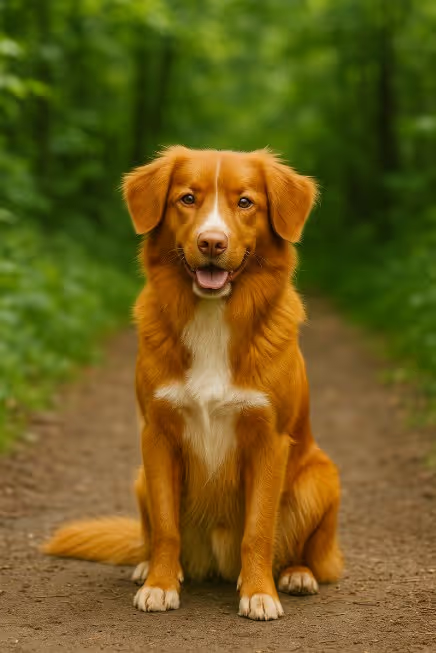The Nova Scotia Duck Tolling Retriever (“Toller”) is a compact, fox-like retriever bred to lure (“toll”) ducks to shore with playful motion—and then expertly retrieve in icy waters. Bright, athletic, and intensely people-focused, Tollers are fantastic for active families who love training, swimming, and outdoor life. If you’re wondering “Are Tollers good apartment dogs?”—yes, with 60–90 minutes of daily exercise and enrichment. “Do Tollers shed?”—yes: a water-resistant double coat means seasonal coat-blows.

Developed in Yarmouth County, Nova Scotia in the early 20th century, Tollers were crafted from small retrievers, spaniels, and likely farm collie/spitz types to imitate the antics of foxes that fascinate waterfowl. Hunters used the dog’s quick, playful motion along the shoreline to draw curious ducks within range—then relied on the Toller’s cold-water courage and soft mouth to retrieve. Recognized long ago by the CKC and by the AKC (2003), Tollers today excel in field work, obedience, agility, and as keen adventure companions.
A medium, powerful retriever with a weatherproof coat and vivid expression.
Low trimming, steady maintenance—especially during seasonal sheds and after swims.
A high-drive retriever that thrives on purposeful work.
Eager, clever, and sensitive—keep training upbeat and structured.
Fuel the athlete; keep lean for joints and endurance.
Generally robust, with a few breed-noted issues to screen for.
Select for proven health testing, stable temperament, and working aptitude.
Are Nova Scotia Duck Tolling Retrievers good apartment dogs?
Yes—if you provide 60–90 minutes of daily exercise, training, and enrichment.
Do Tollers shed a lot?
They shed seasonally and moderately year-round; daily brushing helps during coat blows.
Are Tollers hypoallergenic?
No. They have a double coat and are not hypoallergenic.
How much exercise does a Toller need?
Plan for 60–90 minutes daily with retrieves, swimming, or sport training.
What is “tolling”?
Playful, fox-like movement along shorelines that lures ducks closer—then the dog switches to retrieving.
Are Tollers good with kids and other pets?
Generally excellent with proper socialization; supervise around small pets and teach calm greetings (they’re enthusiastic).
Do Tollers bark or make the “Toller scream”?
Some vocalize when excited. Teach a solid quiet cue and reinforce calm behaviour.
Toller vs Golden Retriever—what’s different?
Tollers are smaller, more intense, and often higher in drive; Goldens are larger and generally easier-going. Meet lines to compare.